The Green Planet
By Susie Smith
Our underwater worlds are home to many bizarre and beautiful plants. But life isn't always easy in these diverse and sometimes volatile environments.
From the aquatic plants surviving the strong currents of Colombia's Rainbow River to giant water lilies fighting for light in Brazil's flooded Pantanal, these plants can thrive in adversity.
Discover more underwater wonders with new Sir David Attenborough series The Green Planet, which explores the strange and wonderful world of plants like never before. Find out where to watch in your region here. 🍃
The Giant waterlilly
The Giant Water Lily, Victoria amazonica, grows in the Pantanal region of Brazil. It starts as a little bud that grows up towards the surface of the water, before emerging into a beautiful lily pad that can span up to three metres wide. The plant's underside boasts girders and ribs to help support its huge structure. Its underwater stalks, which help to anchor the leaves, can reach up to eight metres in length.1
 The spines on its underside help the plant to fight for space and defend itself against predators. @ BBC Studios NHU
The spines on its underside help the plant to fight for space and defend itself against predators. @ BBC Studios NHU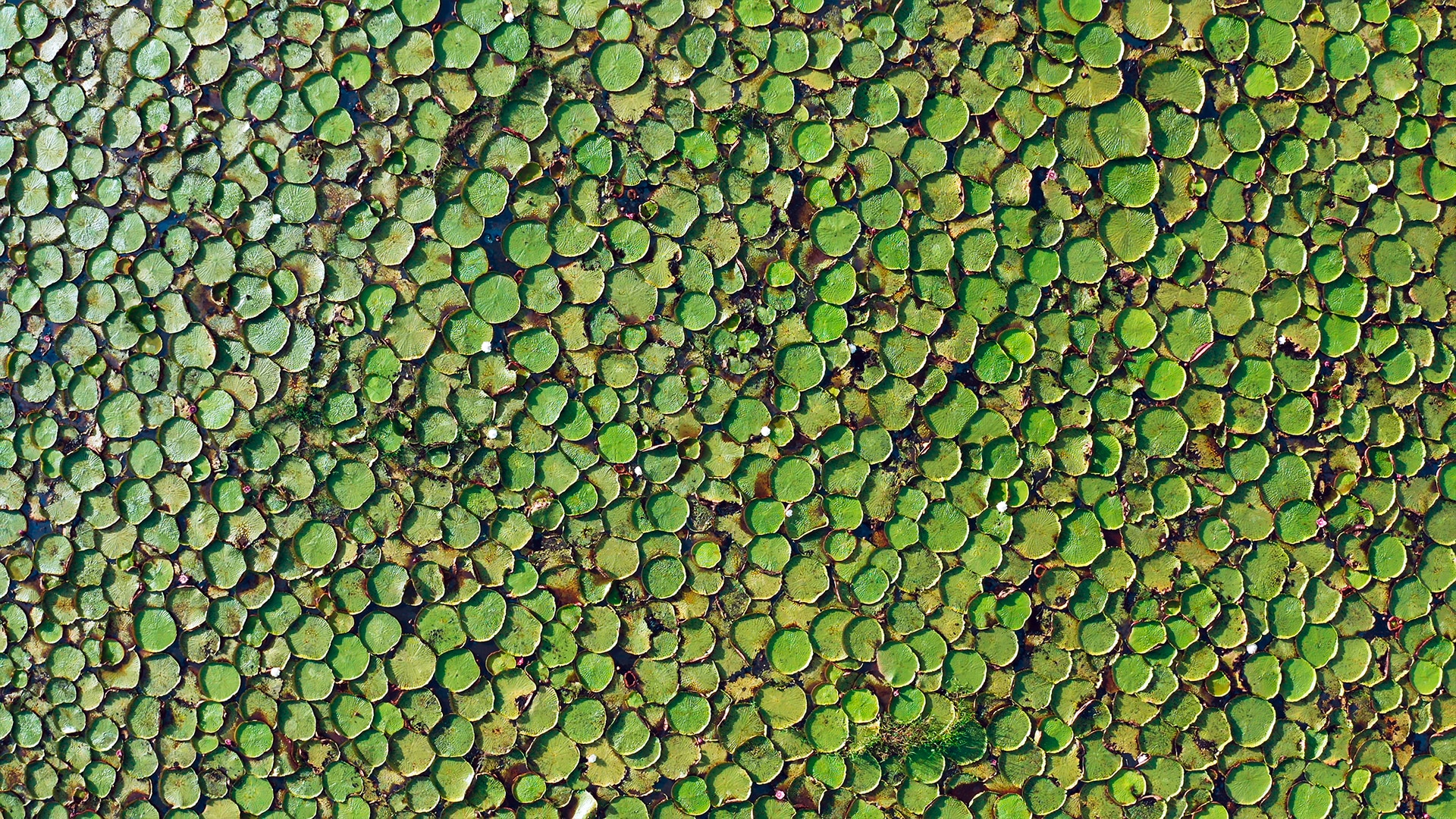 This lake has been completely over taken by lily pads who have successfully beaten most other competition for space. @ BBC Studios NHU
This lake has been completely over taken by lily pads who have successfully beaten most other competition for space. @ BBC Studios NHU Lily pads can grow up to three metres in size! © BBC Studios NHU
Lily pads can grow up to three metres in size! © BBC Studios NHU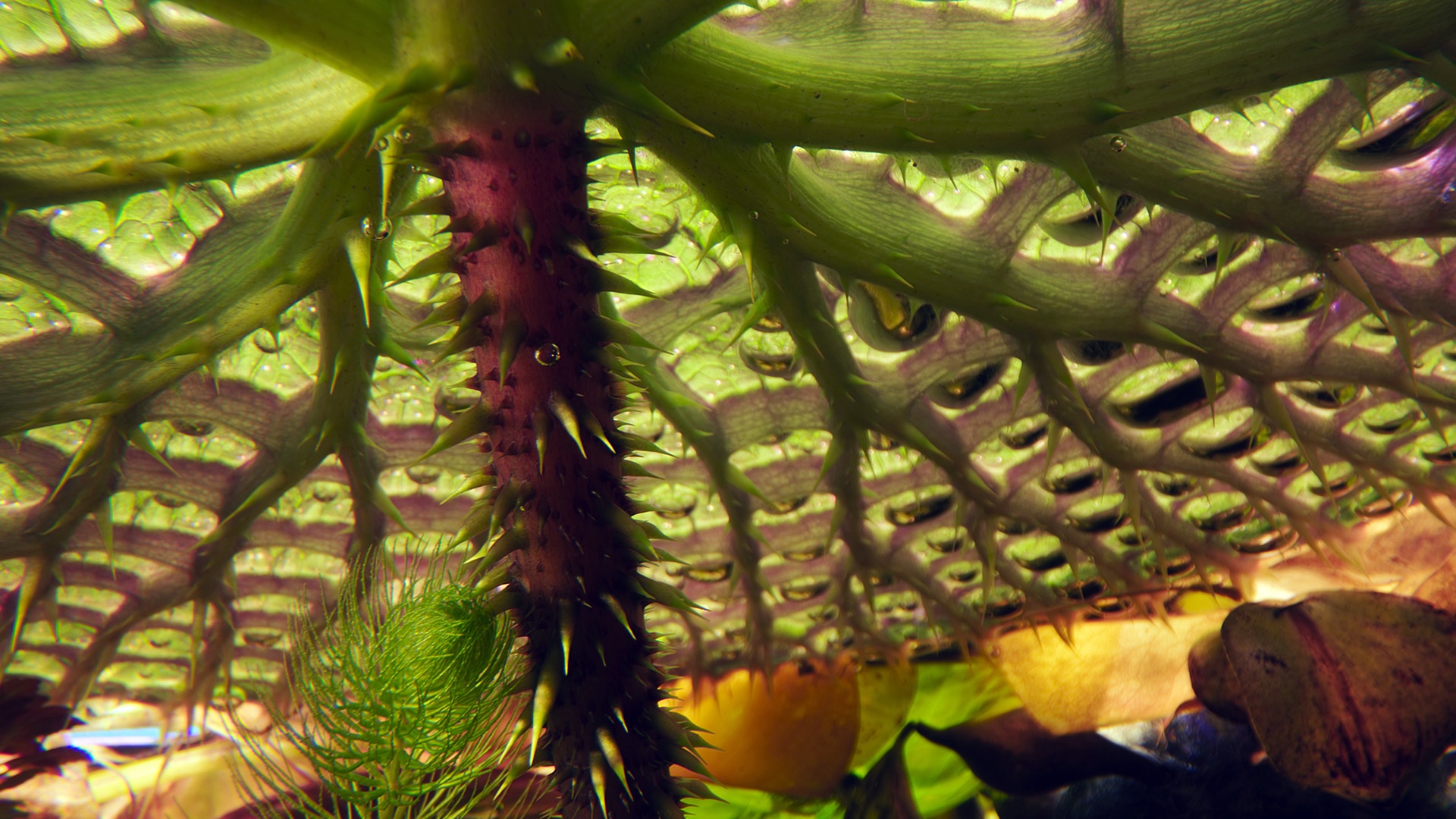 The giant water lily has a system of girders and ribs that act as a structural support for its wide surface area. © BBC Studios NHUMacarenia clavigera
The giant water lily has a system of girders and ribs that act as a structural support for its wide surface area. © BBC Studios NHUMacarenia clavigeraWhen the water level rises, and it has enough sunlight, the Macarenia clavigera plant bursts into a beautiful range of colours, turning the Caño Cristales river in Colombia into a liquid rainbow.2
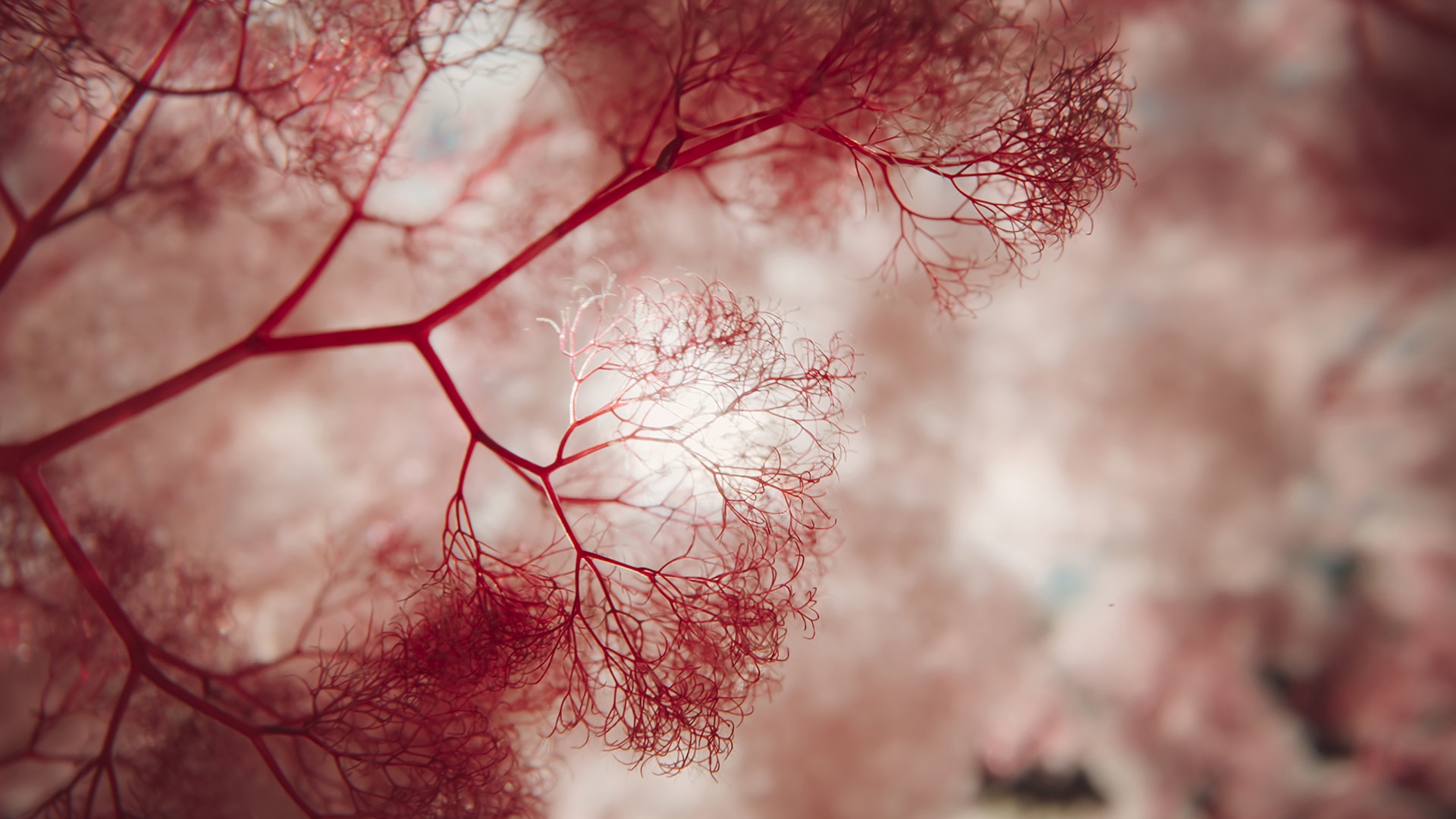 Macarenia clavigera needs the correct environment to bloom which is why it remains dormant in certain seasons. © BBC Studios NHU
Macarenia clavigera needs the correct environment to bloom which is why it remains dormant in certain seasons. © BBC Studios NHU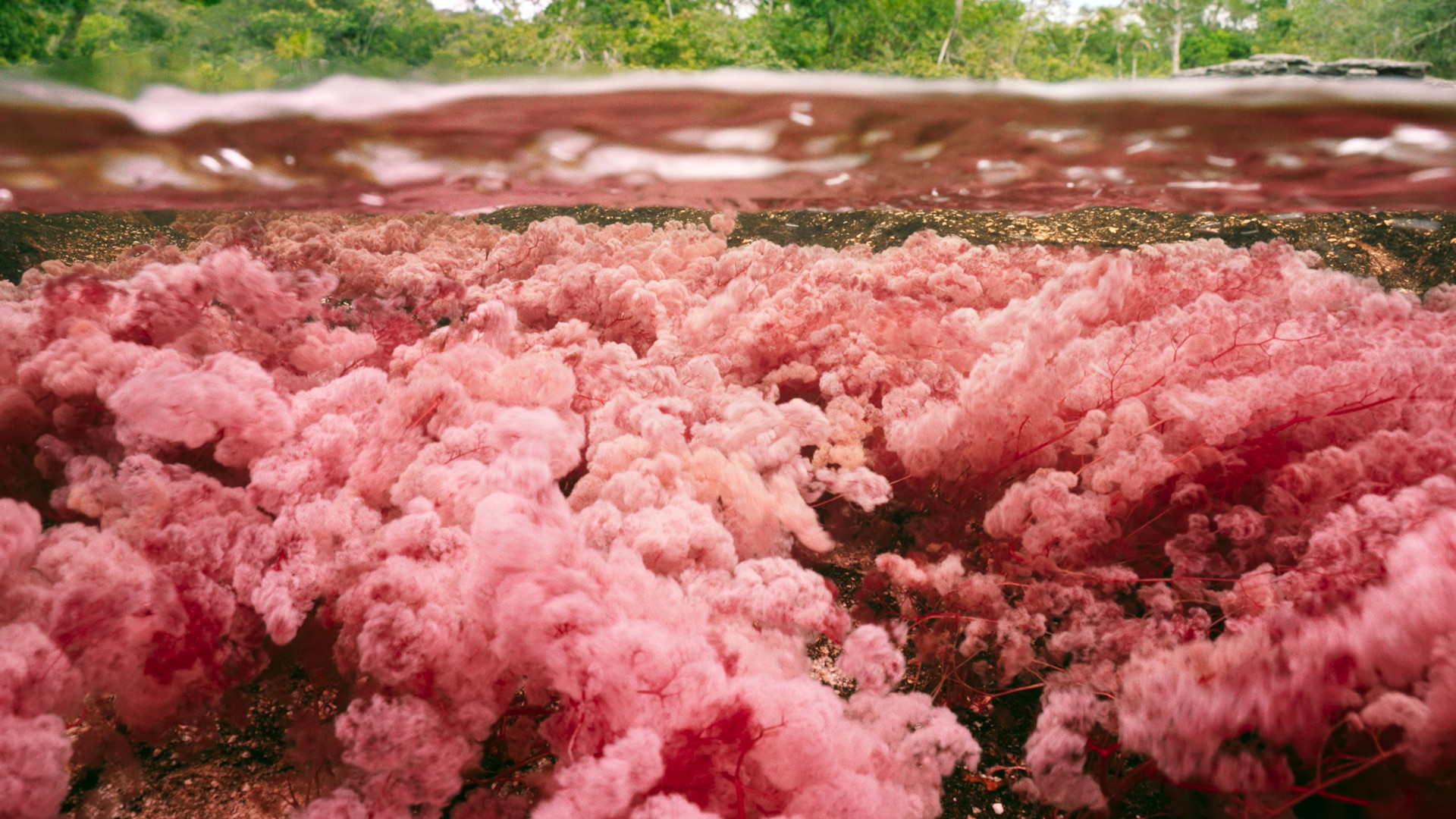 Under the right conditions, it can turn fuchsia, purple, red or even yellow! © BBC Studios NHU
Under the right conditions, it can turn fuchsia, purple, red or even yellow! © BBC Studios NHU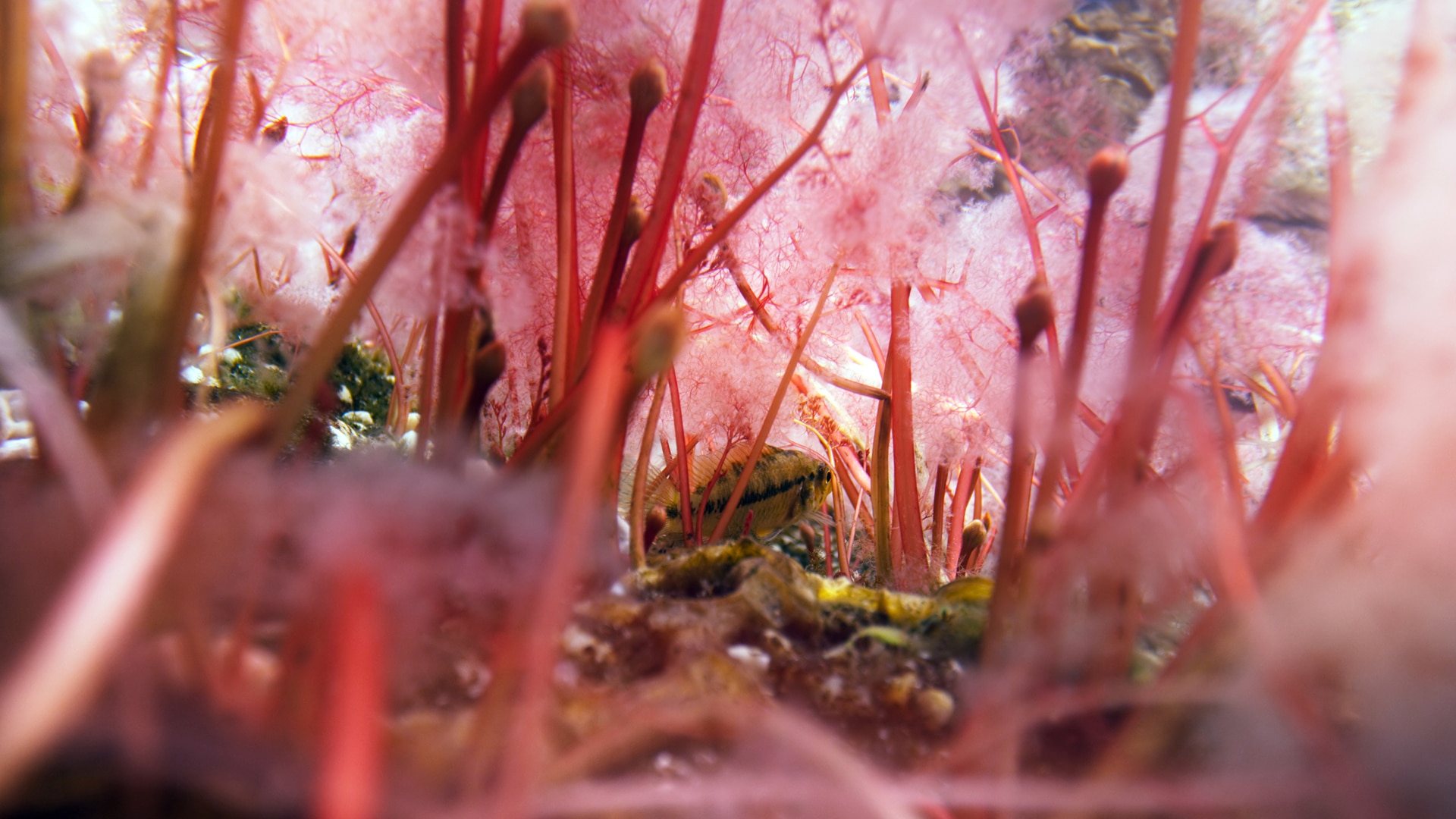 Macarenia clavigera stick to the rocks of the river beds using a natural superglue. © BBC Studios NHUWater Hyacinth
Macarenia clavigera stick to the rocks of the river beds using a natural superglue. © BBC Studios NHUWater HyacinthThis floating flower is found native to the Amazon Basin in South America. The Hyacinth can produce up to 20 flowers from one singular stalk, and rise up to 1m above the waterline.3
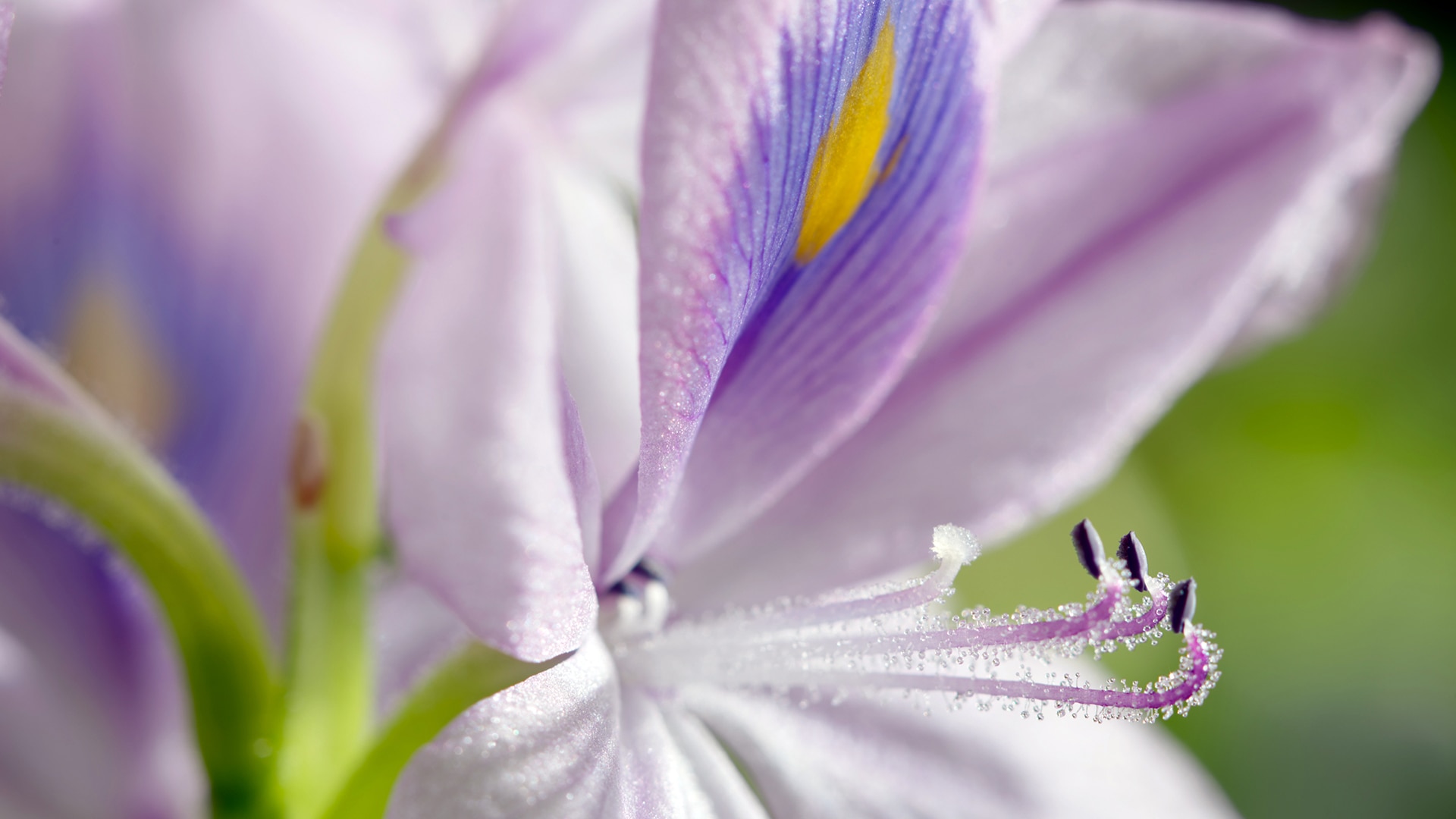 Water Hyacinths can produce as many as 20 flowers! © BBC Studios NHU
Water Hyacinths can produce as many as 20 flowers! © BBC Studios NHU The water Hyacinth flower grows from a single stem © BBC Studios NHUWater Crowfoot
The water Hyacinth flower grows from a single stem © BBC Studios NHUWater CrowfootThe Water Crowfoot, or Ranunculus aquatilis, is native through most of Europe, and a member of the buttercup family. This underwater plant grows in mats on the water's surface and has floppy stems, which flex with the water's current. But it sends special, stiff flower-bearing stems up into the air to attract pollinators.4
 The flower of a crowfoot normally has around five petals with a yellow centre. © BBC Studios NHU
The flower of a crowfoot normally has around five petals with a yellow centre. © BBC Studios NHU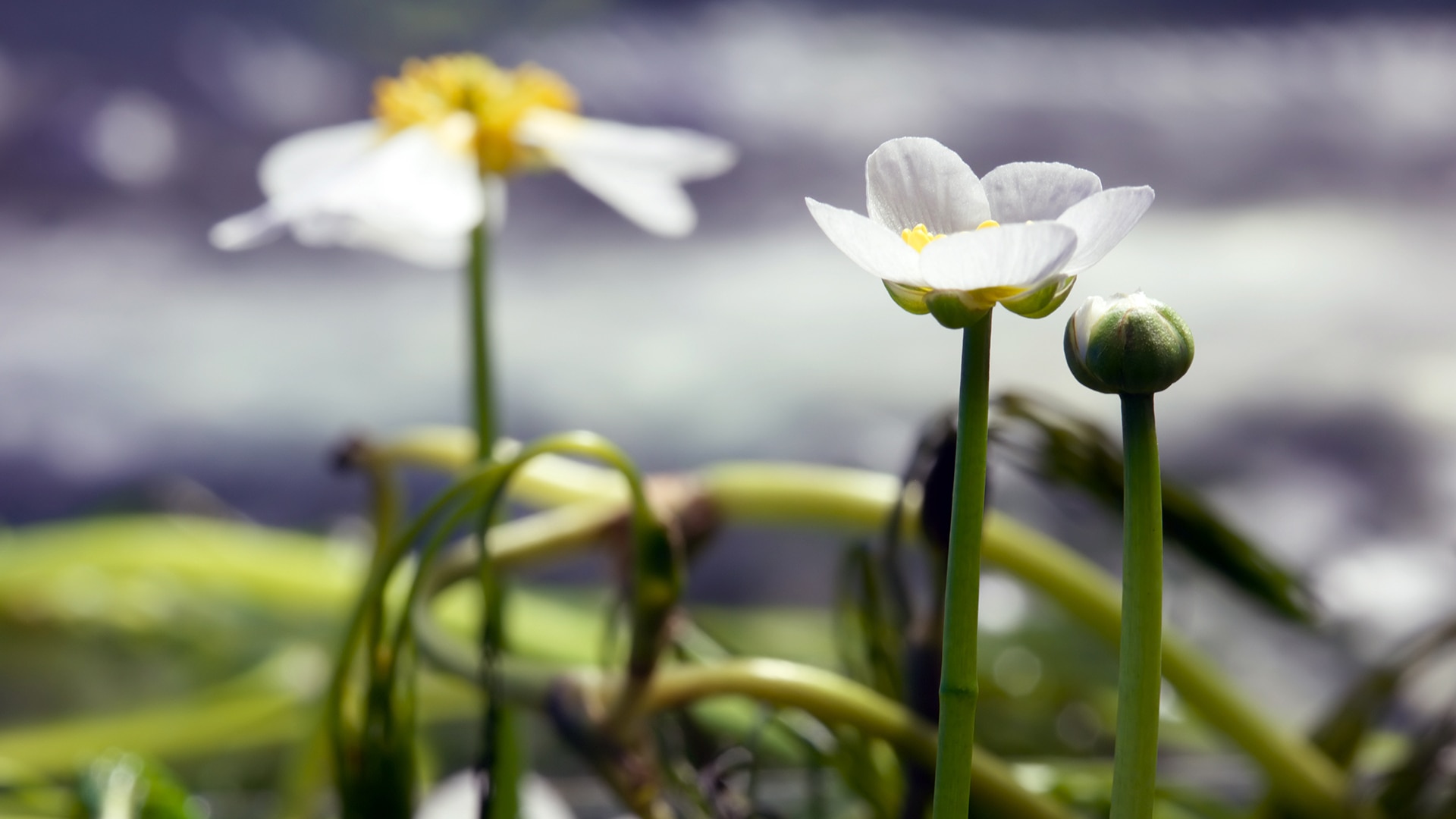 The stem of a crowfoot above water is stiff and rigid so it can hold a flower. © BBC Studios NHUWater Lettuce
The stem of a crowfoot above water is stiff and rigid so it can hold a flower. © BBC Studios NHUWater LettuceThe pantropical water lettuce, Pistia stratiote, carries its name from its lettuce-head-like appearance, and can be found across all continents except Antarctica. In part thanks to its thick and spongy leaves, this aquatic plant is virtually unsinkable. Its roots are not attached to the riverbed, allowing it to travel with the river current.
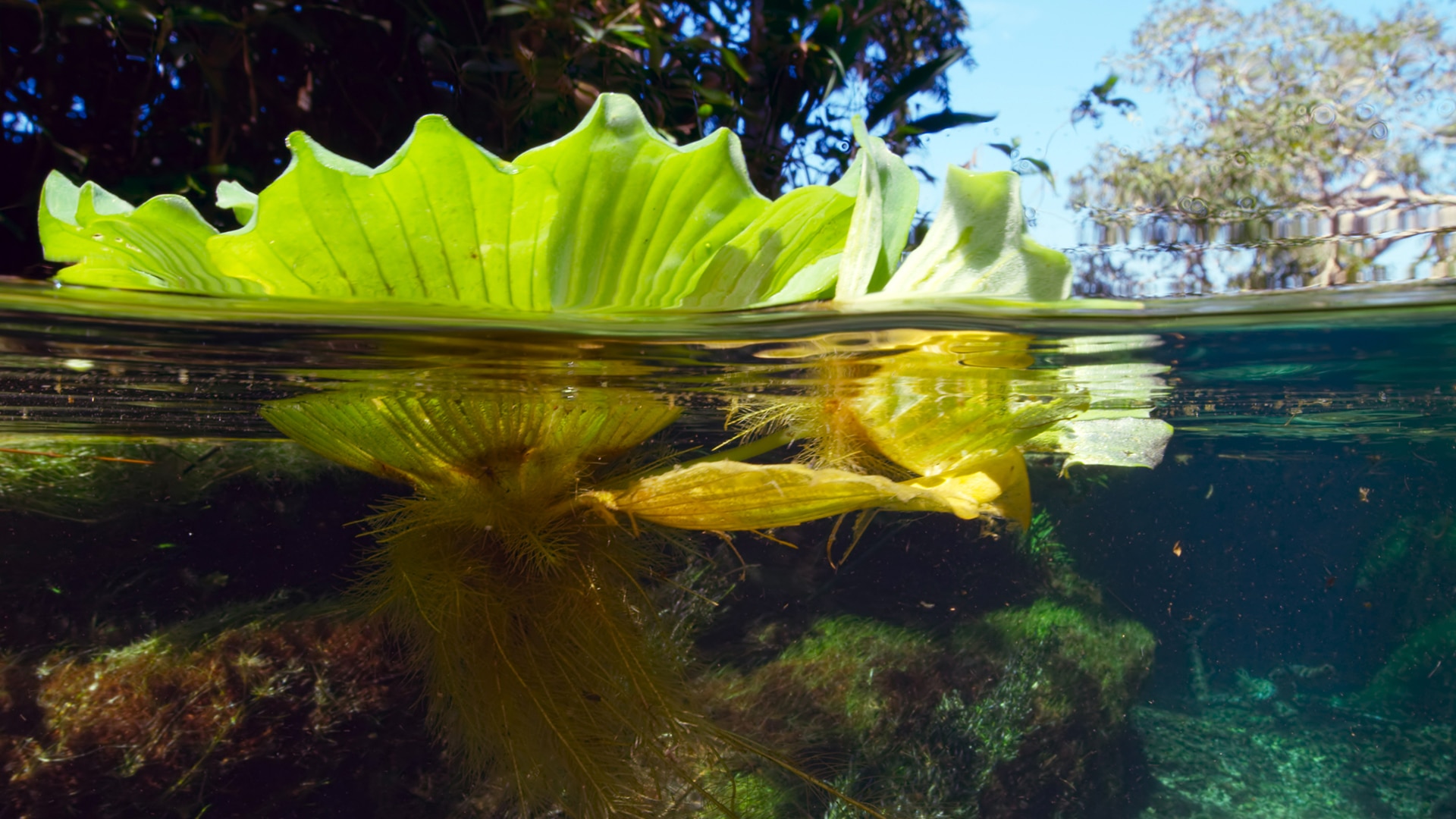 Water lettuce roots float freely and provide shelter to small fish in rivers. © BBC Studios NHU
Water lettuce roots float freely and provide shelter to small fish in rivers. © BBC Studios NHU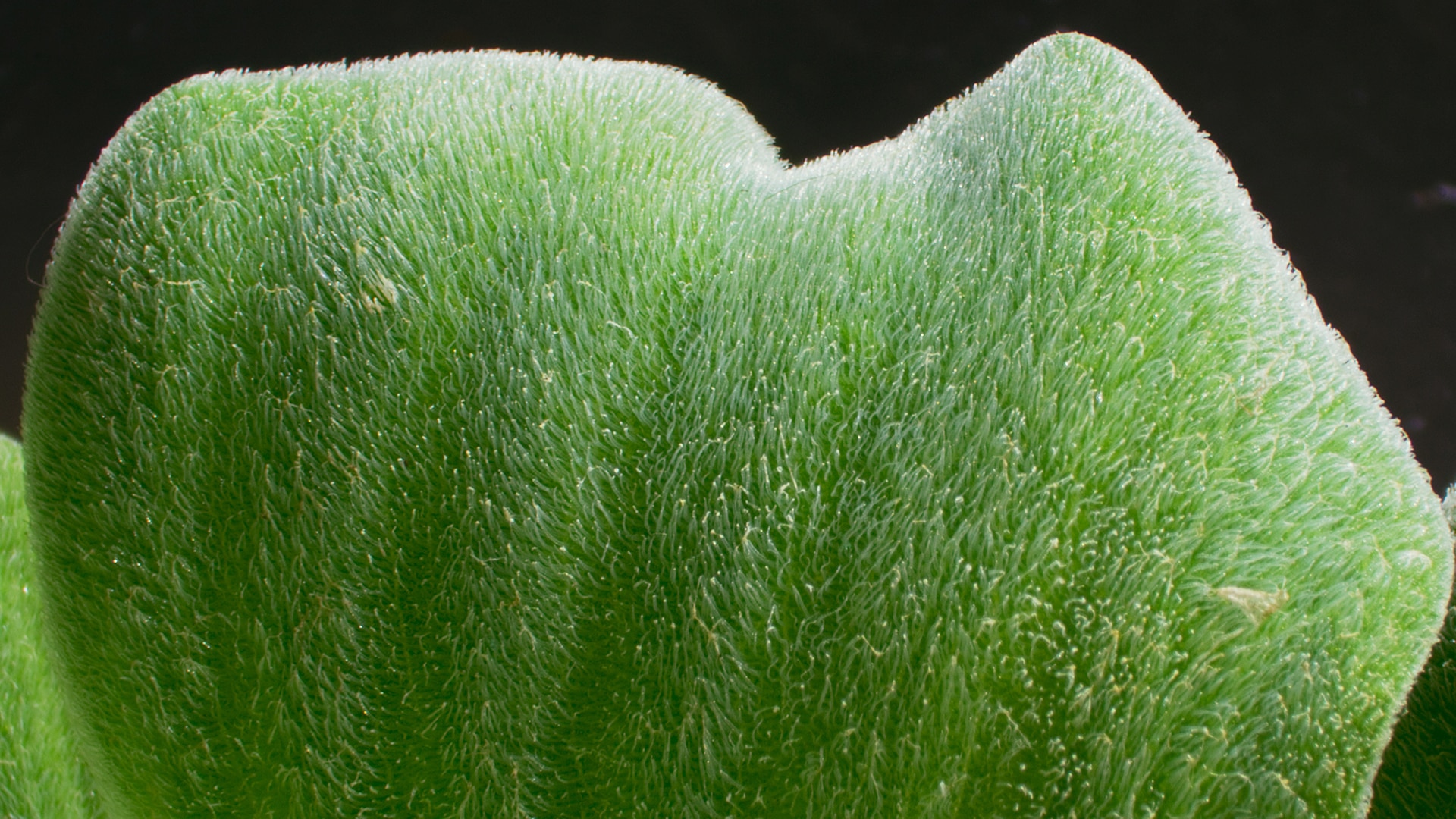 The leaves of water lettuce are spongy, helping it to float. © BBC Studios NHUSea grass
The leaves of water lettuce are spongy, helping it to float. © BBC Studios NHUSea grassSea grass grows in shallow and sheltered coastal areas and has meadows in 159 countries covering 300,000 square kilometres (115,000 square miles).5 This plant is incredibly important as it absorbs 10% of the ocean's carbon each year.6 The grass builds its leaves and roots using the carbon through the process of photosynthesis.
 Using the process of photosynthesis sea grass absorbs 10% of the ocean's carbon. © BBC Studios NHU
Using the process of photosynthesis sea grass absorbs 10% of the ocean's carbon. © BBC Studios NHU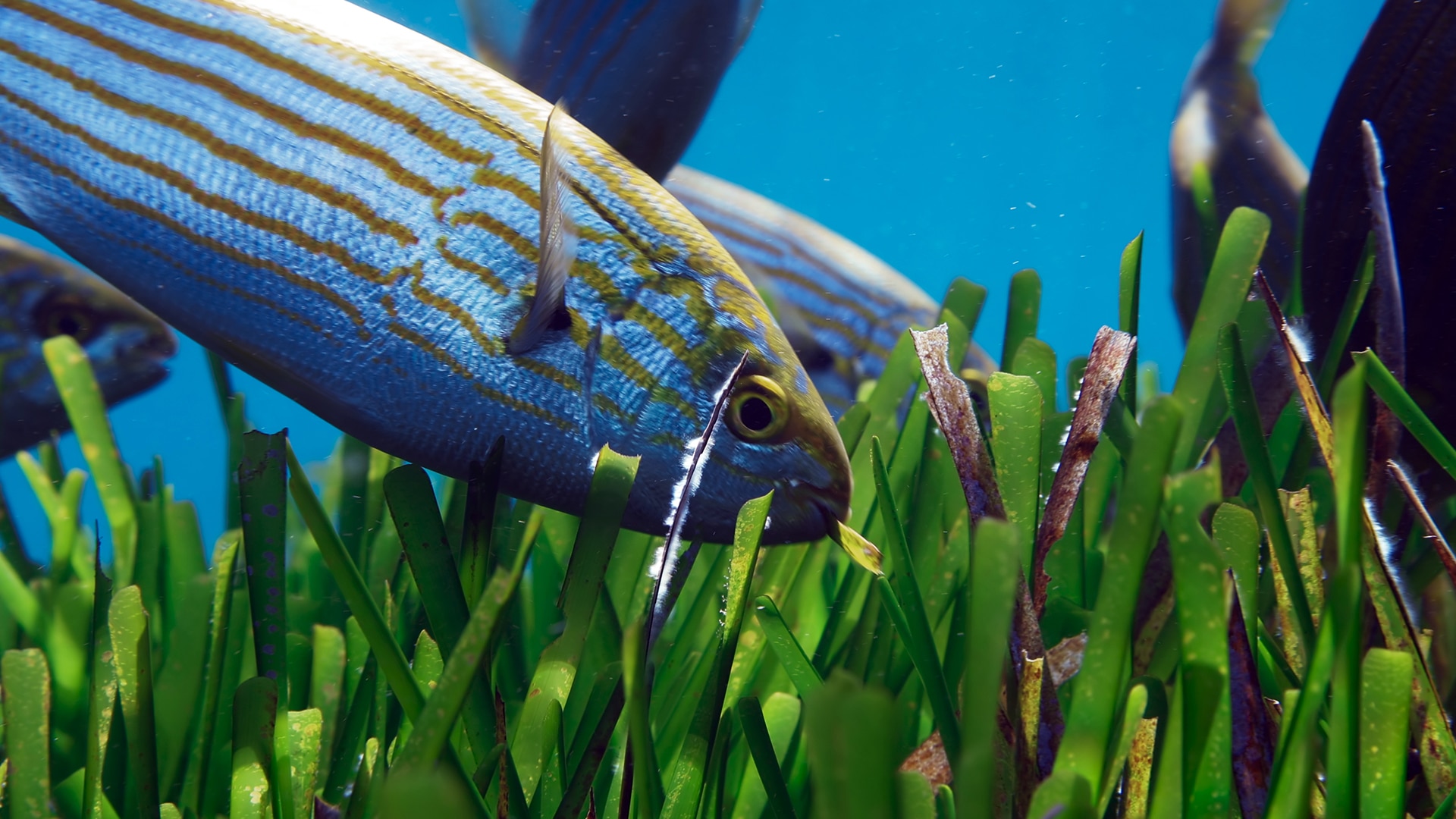 Sea grass provides a habitat for a large array of fish and marine creatures. © BBC Studios NHU
Sea grass provides a habitat for a large array of fish and marine creatures. © BBC Studios NHUBBC
